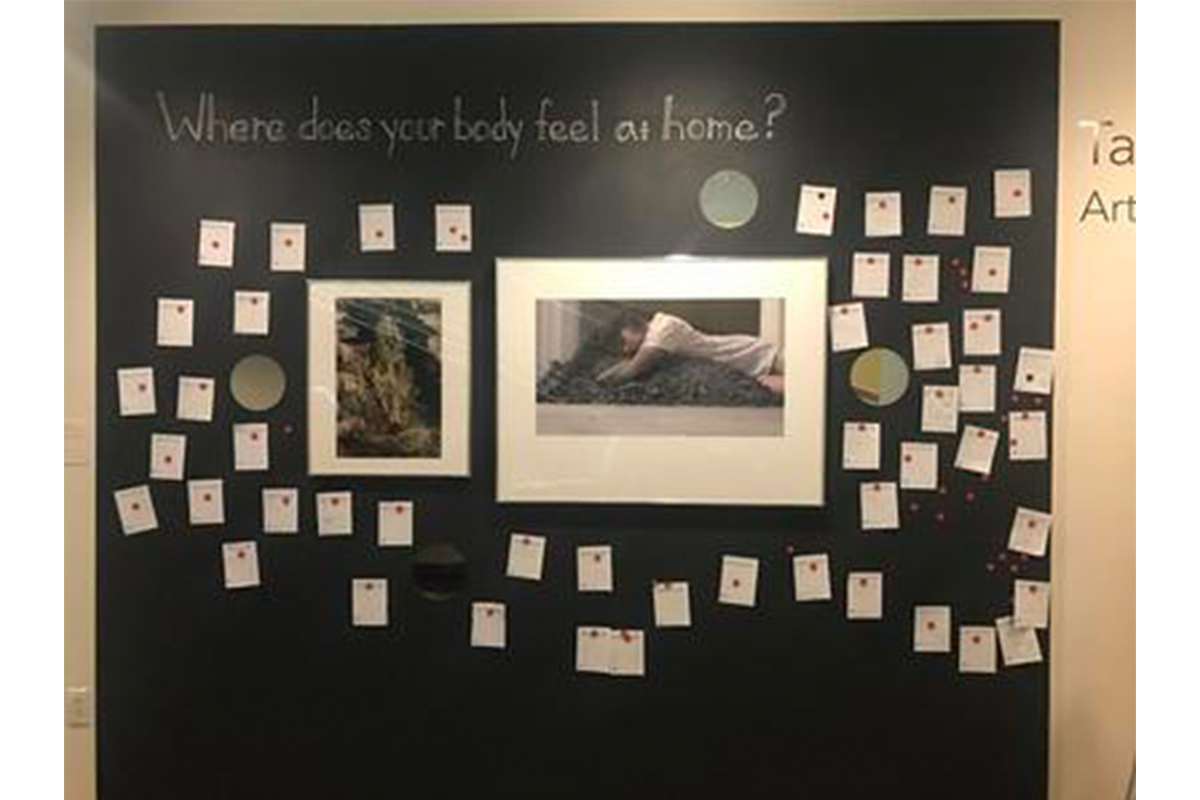
TALK BACK | Dania González and Ana Mendieta
Guest blogger Zarah Ferrari ’18 is the first Brown Kennedy Museum Research Fellow in Art History. This fellowship, offered jointly by the Department of Art and the Smith College Museum of Art, provides a one-year fellowship to a Smith junior or senior art history major or minor. Fellows engage in sustained object-based research and contribute to public scholarship about objects in the SCMA collection. Zarah will deliver a gallery talk on her installation on Thursday, May 17 at 4pm on the lower level of the Museum.
At the beginning of my Brown-Kennedy Fellowship, I was hesitant about curating an exhibition for the Smith College Museum of Art (SCMA) as the culmination of my research project. Despite being an Art History major, this spring semester of my senior year was my first introduction into museum courses. At Mount Holyoke, I am taking a course called “Museumized: History, Ethics, and Work”, which addresses the complicated questions curators face when working and creating within the museum context. Throughout the semester the class worked together to create an exhibition, which we presented last week in the Carson Gallery at the Mount Holyoke College Museum of Art (MHCAM). This course was highly informative, but as I only worked in the education team for the class, I lacked the knowledge of how curators brainstormed ideas for exhibitions, worked through iterations, or settled on a final project.
I quickly realized that creating an exhibition within a museum is similar to an academic research project that entails asking a lot of questions that will likely not be answered. It is the pursuit of these curiosities that yields the greatest outcome, one that is likely dissimilar from the original hypothesis. I began with sketching as many potential exhibition ideas until it resulted in something that intrigued the imagination and conjured curiosities.
Initially, I wanted to create an exhibition with five or six of the pieces I had been researching throughout the semester. All of the works I had chosen were performance art or publicly engaged, so I fantasized about creating an installation that sparked viewer participation, such as installing interactive iPads or putting some works on the floor for people to lay down next to. My supervisor Aprile Gallant, the Associate Director of Curatorial Affairs and Senior Curator of Prints, Drawings, and Photographs, welcomed my wild ideas, but assisted me in making them more realistic for the platform and time allotment given.
The ‘Talk Back’ wall in the lower level of the SCMA was ideal for the interactive focus of my exhibition, as it was the one gallery space visitors most engaged with within the museum. I pared down my elaborate ideas, coupling Dania González’s Retencion, a recent gift from New York-based artist Nina Yankowitz, with Ana Mendieta’s Imagen de Yagul, a work already in the SCMA collection. With just two works versus six, it gave the art space to ‘breathe’ and allowed for more direct comparison between the two images. The two pieces complemented each other in a beautiful way that suggested synchronistic time despite being created decades apart. González was inspired by the same “Land Art” movement Mendieta was a part of, and it caused me to wonder if Mendieta would relate to González’s work in the same way. When I asked González how she felt about the pairing, she felt overjoyed and privileged to be compared with such an artistic master like Mendieta, for whom she feels “great admiration.” (Spanish to English translation)
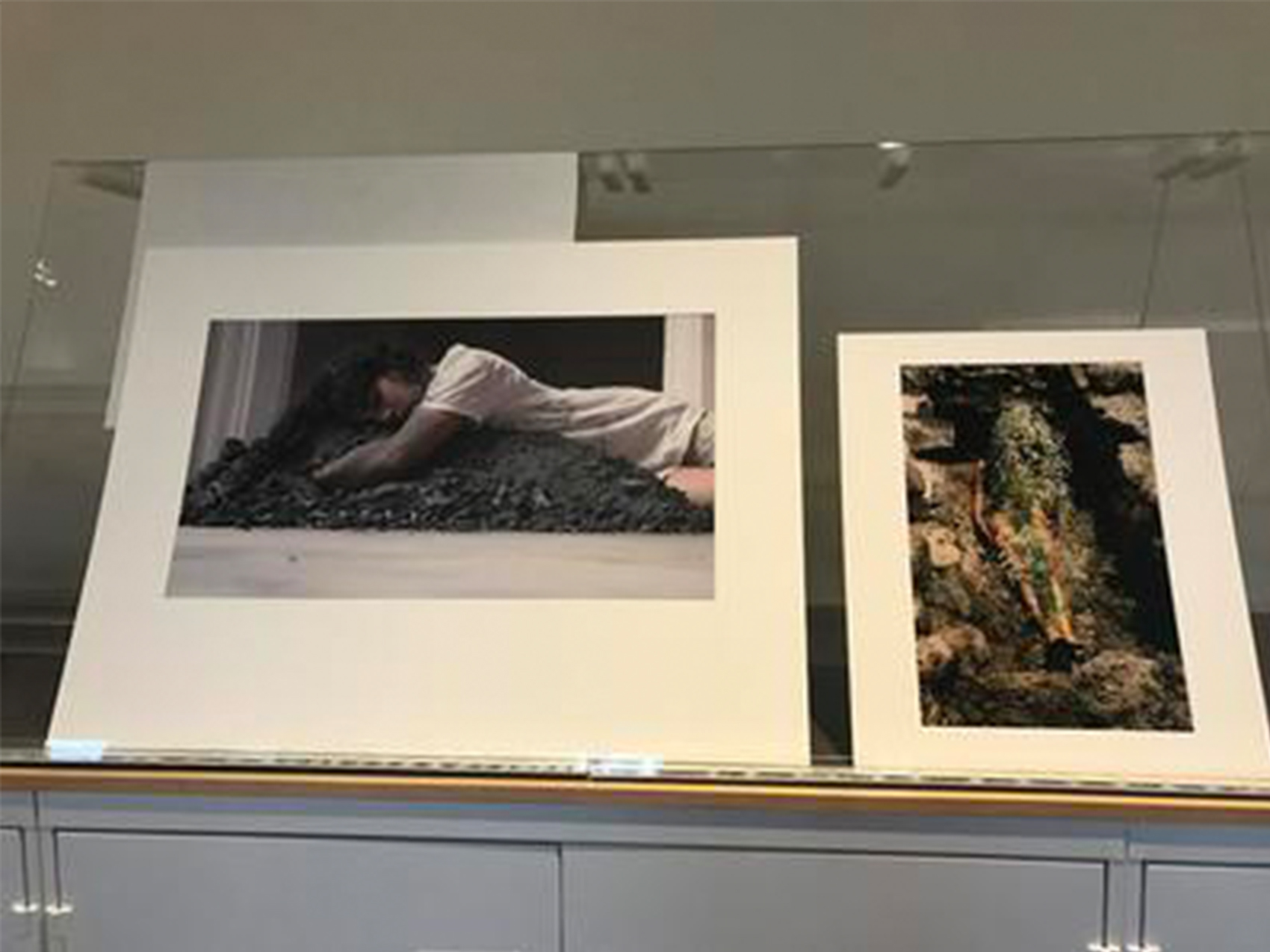
My first time seeing the works together. We ended up swapping them so that Mendieta’s body leaned towards Gonzalez’s
While I will save an in-depth analysis of the exhibition for a separate post, when I see González embracing the earth of her destroyed home in the work Retencion, I project my own feelings of home onto it. Her embrace is intimate, yet there is a tenseness visible in her body, in her brow, the quarter turn of her hips, or the way she digs her arms into the mound. To me this may communicate her knowing that this moment of deep intimacy is temporal, the last physical moment with her home before she is ripped away and left with only memories. In Ana Mendieta’s Imagen de Yagul, I also see her returning temporarily to an indigenous land she can never truly be a part of. Temporality may be glimpsed in these images through the torn flowers in Imagen de Yagul, the collapsing mound in Retencion, or even in the idea that each photograph captures a moment of a performance that is long past.
This lens of the pain and intimacies of returning home led me to the final question I wanted viewers to respond to on small slips of paper when viewing my exhibition: Where does your body feel at home? This particular question was chosen after consultation with Gina Hall, SCMA’s Associate Educator for School and Family Programs, Aprile, and many friends. It works because it is a question everyone wanted the answer to, from both themselves and others. I have always wanted my body to feel at home with itself, but it never quite has. Were there other people who felt the same way? If not, where was that place for them? The question is nostalgic, causing the viewer to simultaneously recall home and acknowledge that they are not there. I wanted people to feel at once present and displaced.
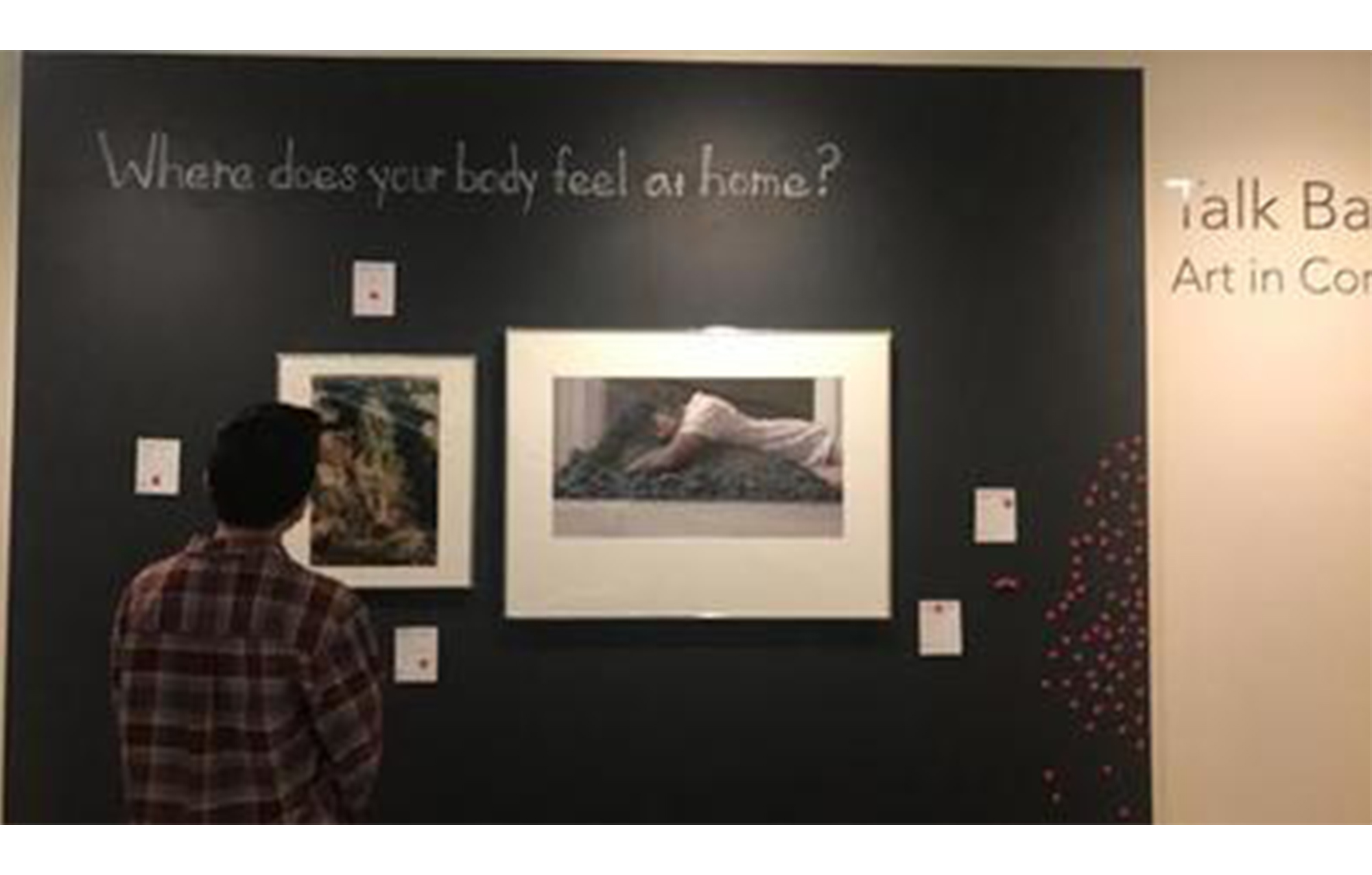
An anonymous visitor one day after the opening of the exhibition
To instigate further veiwer engagement, I knew I wanted to incorporate mirrors into the gallery space design. I wanted viewers to be self reflective and acknowledge their viewing as a part of the composition to the works themselves. All forms of engagement are welcome within the exhibit, and maybe some people will even take a selfie! (I know I did). It took about an hour to write the question in chalk, as being a lefty means a lot of smudges and mistakes. A few days later I mounted the mirrors, just four of the ten I had initially purchased due to the amount of responses that had accumulated throughout the week.
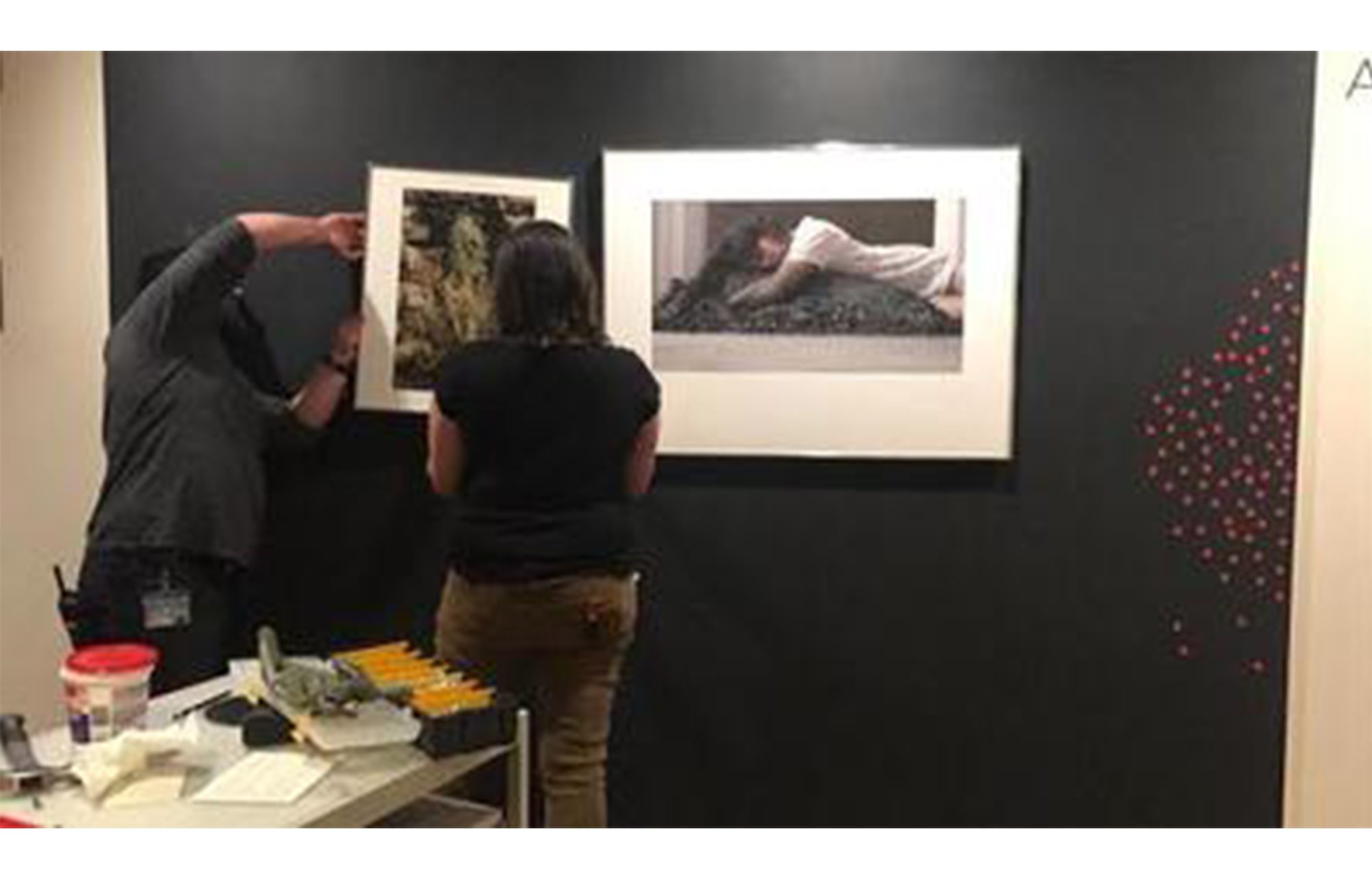
SCMA preparators Nik Asikis and Anna Hamel installing the two works of art
Writing the wall label was one of the more challenging aspects of this project. As an Art History major, I am used to writing that is exclusively seen by my professors, and am significantly less practiced in writing for a larger audience. Art historical writing is exceedingly formal and inaccessible, as was my first try at writing a label. Through the help of the SCMA staff, to whom I am immensely grateful, I was able to understand how to make my language more legible for audiences of all ages. In order to grow as a writer I have had to learn to let go, work with other opinions, and edit many drafts.
If I ever have the opportunity to embark on another project like this one in the future, the support I have received from the SCMA staff this year has made me confident that I now have the tools to do so.
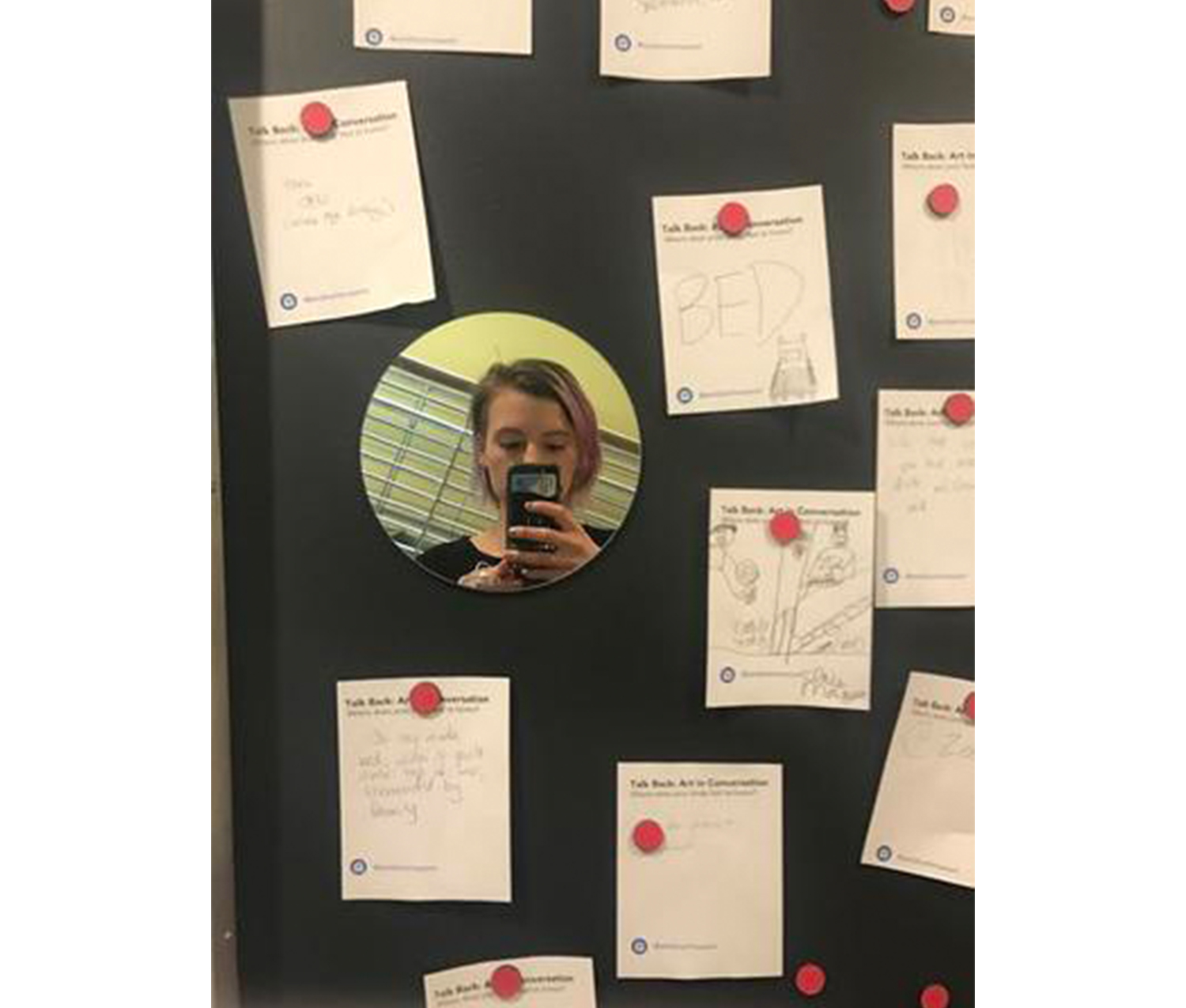
Mirror selfie among visitor responses to the exhibition